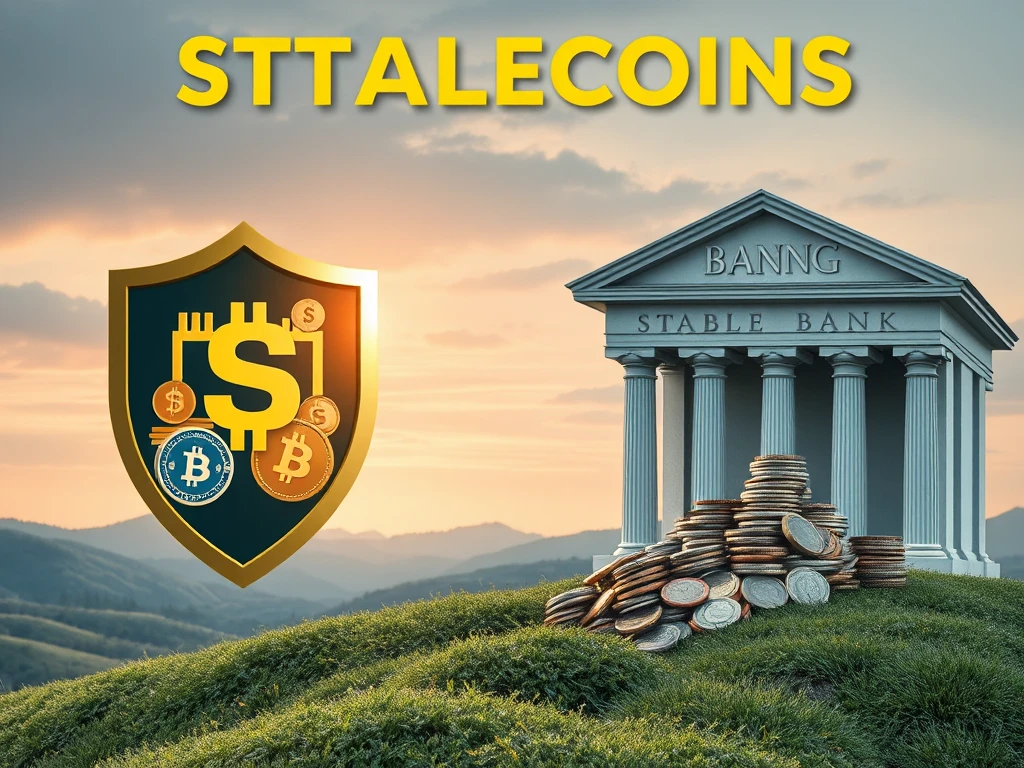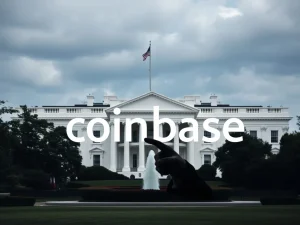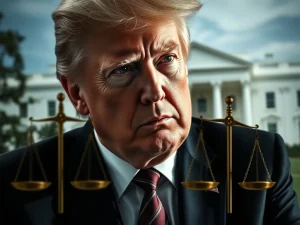Stablecoins: Crucial Debate on Safety Versus Bank Deposits

The world of digital assets is constantly evolving, prompting new discussions about the fundamental nature of money and finance. A recent panel at the Proof of Talk conference in Paris sparked a significant debate: could stablecoins offer a safer alternative to traditional bank deposits? This question is crucial for understanding the future of finance and the role of digital assets.
Are Stablecoins Safer Than Bank Deposits?
Diogo Monica, a general partner at Haun Ventures, presented a compelling argument during the “Stablecoins: Programmable Money in a Digital World” panel. He suggested that many stablecoins are backed by highly secure assets, such as reserves held in globally systemically important banks (G-SIBs) or short-term US Treasury bills. Monica views these backing assets as inherently more secure than typical commercial bank deposits.
His reasoning centers on the structure of commercial banking. A deposit in a commercial bank is technically a liability for the bank. If the bank faces financial difficulties or fails, depositors might be exposed to risk, especially if their funds exceed depositor insurance limits. In contrast, a reliable stablecoin aims to represent a direct claim on top-tier collateral. This structure, Monica argued, provides a potentially stronger foundation compared to funds held in a commercial bank.
Exploring Crypto Safety and Issuer Risk
While the theoretical backing of stablecoins can appear robust, the practical reality depends heavily on the entity issuing the stablecoin. This introduces a different category of risk: issuer transparency and management. The history of major stablecoin issuers highlights these challenges, particularly concerning Tether, the largest centralized stablecoin by market capitalization.
Tether has faced significant scrutiny over its reserves and operational transparency. A notable incident involved the loss of access to funds held by its payment processor, Crypto Capital, in 2018. Court documents revealed that Tether subsequently lent a substantial portion of its reserves (at least $625 million) to its affiliated exchange, Bitfinex, to help it remain solvent. Crucially, this significant transfer and Bitfinex’s liquidity issues were not immediately disclosed to the market. An affidavit from Tether’s general counsel in 2019 stated that USDT was only approximately 74% backed by cash and equivalents at that time due to the loan. Bitfinex eventually repaid the debt by early 2021, and USDT remained liquid throughout, but the lack of disclosure raised serious concerns about transparency and risk management practices.
The Ongoing Debate Around Tether Transparency
Despite publishing regular reserve attestations in recent years, Tether has yet to produce a full, independent audit from a major accounting firm. CEO Paolo Ardoino mentioned in March that the company was engaging with a “Big Four” firm for an audit, but no official audit has been announced. This persistent lack of a comprehensive audit fuels criticism.
Some critics argue that attestations, while providing some insight, do not offer the same level of assurance as a full audit. Cyber Capital founder Justin Bons has been a vocal critic, going so far as to label Tether a significant “existential threat to crypto as a whole” due to these ongoing transparency issues. He emphasized that an “Auditor’s Report” or “Accountant Report” differs fundamentally from a formal, unrestricted third-party audit, which he claims Tether has not undergone for its reserves.
Digital Assets and the Path Forward
The debate surrounding stablecoins, bank deposits, and the specifics of issuer transparency, like the case with Tether, underscores the complexities in the evolving financial landscape. While proponents argue for the potential safety and efficiency benefits of well-backed stablecoins as digital assets, critics rightly point to the critical need for robust regulation, full transparency, and independent verification of reserves to ensure true crypto safety. The discussion at Proof of Talk highlights that the journey towards integrating stablecoins into the mainstream financial system involves navigating both the potential advantages of their structure and the challenges posed by issuer accountability.








